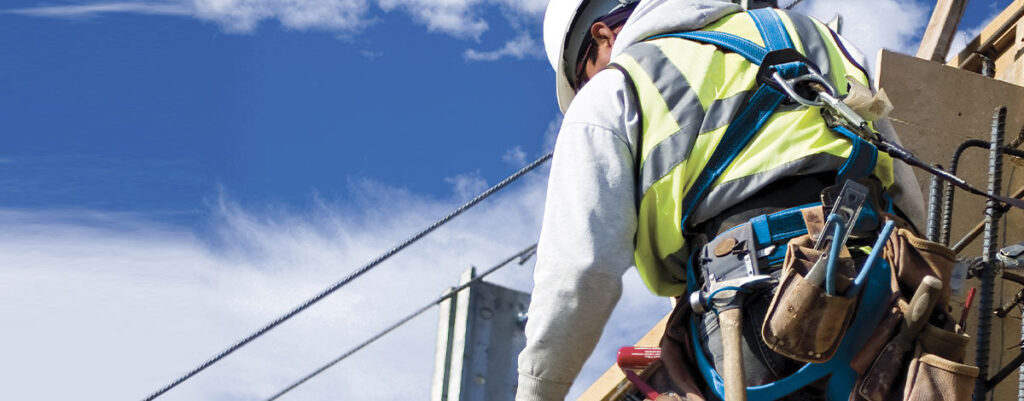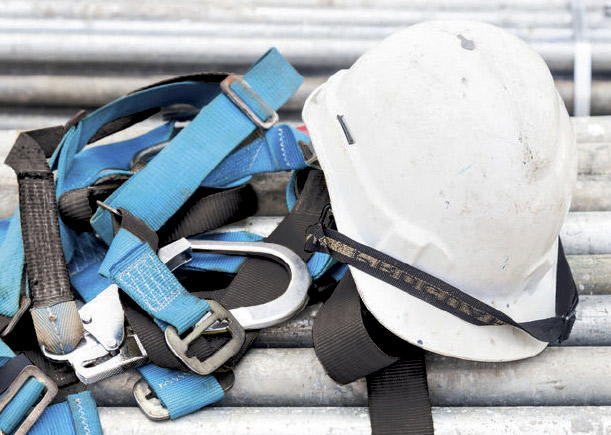
Our range of Technical Safety Fall Arrest Safety Equipment has been designed to protect workers from falls and other hazards when working at heights. Stringent quality processes are adhered to throughout the ISO9001:2015 manufacturing process to ensure that only quality componentry is utilised in the production of these life critical products. The high tenacity polyester yarns are highly resistant to UV, and have been subjected to colour stability and wash abrasion testing.

There is a wide range of possible damage to fall arrest equipment caused by misuse and abuse, general wear and tear, edge/surface damage, ultraviolet light, dirt, grit, chemicals and heat. Fall arrest equipment that has been used to arrest a fall should never be reused. It should be withdrawn from service immediately and destroyed or returned to the manufacturer.
The Personal Protective Equipment at Work Regulations 1992 require employers to maintain fall arrest equipment which is exposed to conditions causing deterioration should be inspected ‘at least twelve monthly’ although more frequent inspections is highly recommended.
You can view the HSE guide on inspecting webbing and rope fall arrest equipment by CLICKING HERE

Equipment should be checked before use and regular inspections should be fully documented. Even minor safety harness defects can cause a significant reduction to the performance of fall arrest gear, for example a one millimetre deep nick or cut in the edge of a webbing lanyard can result in between 5 to 39 per cent loss of strength. Ingress of dirt and UV can also cause damage to the fibres of the webbing, resulting in a similar loss of strength.
What Damage/Degradation Should I Look For?
Defects that can weaken Lanyards include.
Abrasion along the lanyard’s edges.
Abrasion to webbing and loops.
Cuts and nicks in ropes and stitching.
Knot in lanyards that are not part of the original product’s design.
Chemical Degradation
Observed by a change in colour which usually appears as a brownish smear or smudge. Transverse cracks appear when belt is bent over tight. This causes a loss of elasticity in the belt. Paint will penetrate and dry, restricting movements of fibres. Drying agents and solvents in some paints will appear as chemical damage.
UV Degradation
Do not store webbing and rope lanyards in direct sunlight, because ultraviolet rays can reduce the strength of some material.
Damage from Friction and Heat
Nylon becomes brittle and may appear shrivelled and brown. Fibres will break when flexed and should not be used above 82 degrees Celsius. Webbing and rope strands may be fused together by molten metal or flame. Watch for hard, shiny spots or a hard and brittle feel. Webbing will not support combustion, but nylon will.
How Should my Fall Protection Equipment be Stored?
You can prolong the life of your safety equipment by maintaining and storing all components correctly. All safety components should be stored away from direct sunlight, in a secure area which is also free from corrosive materials.
Should I Clean my Fall Protection Equipment?
Cleaning your fall protection equipment will also prolong its life, so it is always important to remove all dirt and contamination.
Nylon and Polyester
Wipe off all surface dirt with a sponge dampened in plain water. Squeeze the sponge dry. Dip the sponge in a mild solution of water and commercial soap or detergent. Work up a thick lather with a vigorous back and forth motion. Then wipe the belt dry with a clean cloth. Hang freely to dry but away from excessive heat.
Drying
Harness, belts and other equipment should be dried thoroughly without exposure to heat, steam or long periods of sunlight.
Click our logo below to view the full range of Technical Safety EN Spec Safety Lanyards & Fall Arrest Equipment.
